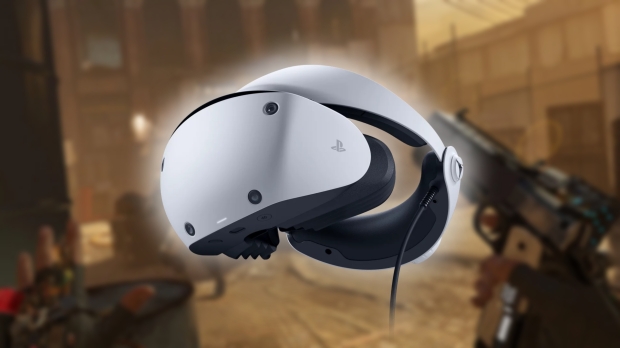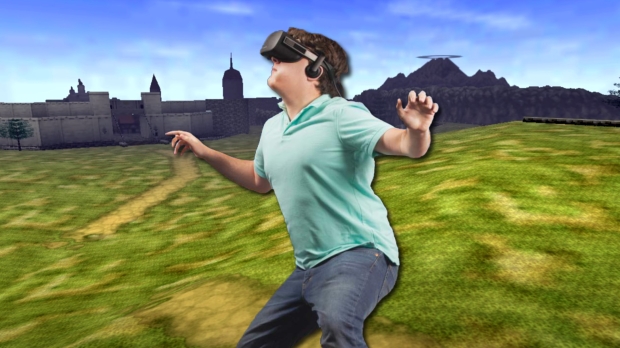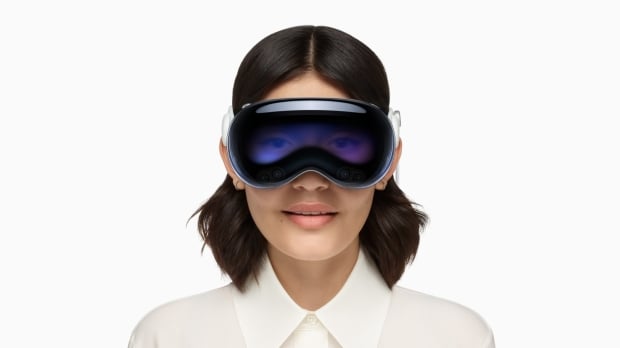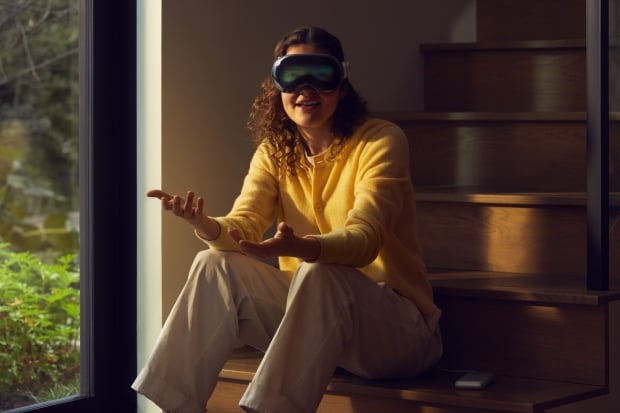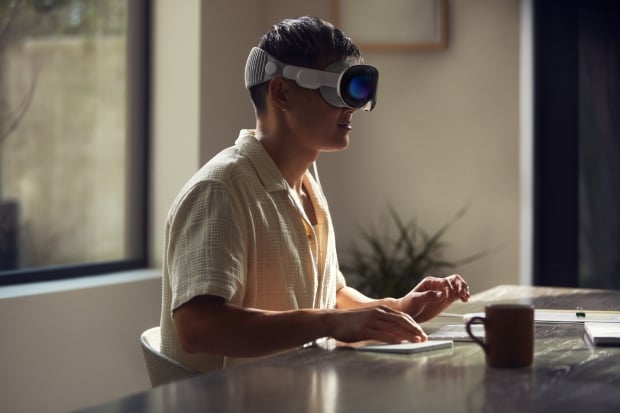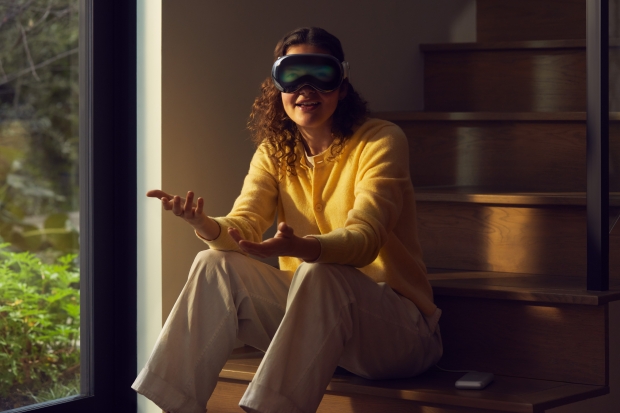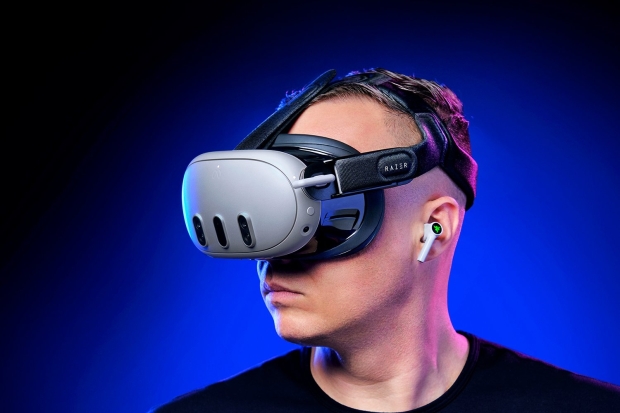Virtual & Augmented Reality and 3D News - Page 1
Half-Life: Alyx on PlayStation VR2 arrives August 6 via the PS VR2 App on Steam
Although sales for Sony's next-gen PlayStation VR2 headset for PlayStation 5 haven't set the virtual world on fire, and reports indicating that Sony is pulling the plug on VR game development, there is some good news.
Yes, you'll be able to play Valve's killer VR app Half-Life: Alyx on PlayStation VR2, thanks to the arrival of full PC support and the PS VR2 App. Although Sony hasn't formally announced the launch, the Steam page for the PS VR2 App is now live with a release date of August 6 listed. We've also got screenshots of the PS VR2 App's interface, which looks similar to how it's set up on the PS5.
The listing states, "Play VR games and apps on Steam using your PlayStation VR2 headset and PlayStation VR2 Sense controllers." This confirms that the motion controllers will work (via Bluetooth) and that the headset will be integrated into SteamVR. However, there is one catch.
Apple Vision Pro unit sales in the US are evidence of a disappointing product
In a world where new technology is released almost every day, it can be quite hard to get excited about a new product release. However, the Apple Vision Pro was an exception, or at least it appeared to be at first.
Reports indicate the Apple Vision Pro is struggling to gain popularity across the United States, with estimates putting its unit sales below the 100,000 mark. Unfortunately, this kind of lackluster response from the US market may mean the newly released virtual/augmented reality headset may not reach even 500,000 units throughout 2024. However, Apple is preparing to release the new spatial computing headset in other markets, which may help bolster its unit sales.
So, why is the Apple Vision Pro not being purchased? Firstly, what is likely preventing the Vision Pro from gaining traction is its price. Apple released the new headset at $3,499, which automatically made the headset an enthusiast-level device unobtainable for the vast majority of consumers. Additionally, the problems don't stop at the price as some people who have bought the Vision Pro are returning it only a few days later, which is an indicator the headset lacks intrinsic utility or value.
Oculus Rift creator Palmer Luckey is working on a new VR headset for military use
Palmer Luckey, founder of Oculus and the creator of the popular Rift VR headset that kicked off the VR movement for PC gaming, has announced that he's working on a new head-mounted display (HMD) that is being "driven" by military requirements.
Details are a bit light, but he made the announcement during a casual fireside chat at the 2024 Augmented World Expo (AWE). "I'm actually building a new headset right now," Luckey said during the panel. "It's driven by military requirements, but it's also going to be used for non-military stuff. It's really cool, it's really something."
As a VR pioneer who created Oculus in 2012, which Meta/Facebook acquired for $2 billion in 2017, Luckey co-founded Anduril Industries, a military defense technology company, shortly after he departed from Facebook. By the sounds of it, the new headset is being built specifically for unknown military purposes.
Apple's Vision Pro team is focused on cutting the headset's price in half
Reports indicate that sales of Apple's premium VR and AR headset, the Apple Vision Pro, have slowed dramatically - which is to be expected for a device starting at $3,499 USD - and the Vision Pro team is reportedly pivoting. The, err, vision for the Vision team is now focused on creating a more affordable headset that is expected to launch by the end of 2025.
This news comes via a new report on The Information citing Vision Pro component suppliers that have been made aware of Apple's plans. The cheaper Vision headset, codenamed N109, aims to keep the impressive high-resolution display of the Vision Pro but make cuts elsewhere to bring the overall cost down. How Apple will achieve this remains unknown.
The Apple Vision team also plans to make the new affordable Vision headset one-third lighter, addressing some of the initial feedback and responses it has received for the Vision Pro.
Impending global Apple Vision Pro launch will include Canada and the UK, we're told
Apple is expected to start selling the Apple Vision Pro outside of the United States for the first time after the WWDC event on June 10, according to previous reports. Now, a new report suggests that we can add two countries to the list of countries that we'd already been told to expect that launch to take place in.
Those two countries, we're told by Bloomberg's Mark Gurman, are the United Kingdom and Canada, two countries that would normally be included in any first-wave launch of new Apple devices. That made it all the more interesting that neither were added to the list of countries that Gurman believed would be included in the second wave but he has now shared a post on X to suggest that they will indeed be included after all.
This list of launch countries now includes Australia, Canada, China, France, Germany, Japan, Singapore, South Korea, and the UK. Ap[ple has not yet confirmed that any of these international launches are happening, but Gurman has previously reported that work is underway to train the relevant retail workers ahead of a global launch. The Apple Vision Pro has also already received regulatory approval in China ahead of the headset's launch there.
China approves Apple Vision Pro for launch weeks ahead of expected release
The Apple Vision Pro went on sale in the United States this past February and while it was an initial hit among early adopters, it's that that retail interest in the mixed reality headset has started to die down. There has so far been little information on when we can expect the spatial computer to go on sale outside the United States, but there have been reports that something could happen within weeks. Apple's own website simply says that the Apple Vision Pro will go on sale internationally in 2024.
Now, we might have our best indication yet that a larger launch is in the offing and we might even know one of the countries that will be included in the second wave of Apple Vision Pro launches. China is one country that had previously been tipped to be involved, and now the country's regulatory outfit has approved the Apple Vision Pro for sale.
The news was shared by Bloomberg's Mark Gurman in a post on the X social network that confirmed China's Quality Certification Center approved the Apple Vision Pro for sale on Monday. This is the last major hurdle that Apple needs to overcome before the Apple Vision Pro headset can go on sale in China, suggesting that a launch is imminent.
Want a cheaper Apple Vision Pro? There's no need to wait, you can get one right now
The Apple Vision Pro has been on sale in the United States since February and that came months after it was announced at WWDC in June of last year. Now, as we get to almost a year since the so-called spatial computer was announced, new reports suggest that the company is readying a global launch. And this comes as Apple continues to be working on making the headset cheaper, allowing more people to consider buying one. But did you know that you don't have to wait for Applet to offer a cheaper Apple Vision Pro in order to get one for less than the going rate of $3,499? Did you know that you can do it right now?
When the Apple Vision Pro first went on sale they were a little difficult to get hold of, and as always scalpers put them up on eBay in an attempt to make a profit. Some did, but as the months tick by people who bought their AR/VR headsets are starting to have buyer's remorse. Whether they paid the $3,499 that Apple chargers or the extortionate prices that eBay rip-off merchants were selling it for, people are finding that they maybe aren't using the Apple Vision Pro as much as they thought. And that means that those who had a little patience can now bag themselves a bargain.
As reported by 9to5Mac, now is an excellent time to treat yourself to a new Apple Vision Pro if you're willing to buy from Apple. You can now pick up an Apple Vision Pro with around a $500 discount, although we've seen reports of headsets being offered for around $2,000, a huge saving over the original price. Apple's $3,499 asking price gets you the 256GB model, while those who need extra space can pay $3,699 for the 512GB version and $3,899 for the 1TB capacity. Note that additional accessories like a new battery pack, ZEISS Optical inserts, and AppleCare Plus cost extra, too.
Apple Vision Pro global launches are coming, here's when to expect an announcement
The Apple Vision Pro has been on sale in Apple's home country of the United States since early February but there has so far been no confirmation of exactly when we can expect the so-called spatial computer to go on sale globally. Apple has said that we should expect that to happen in 2024, but that leaves for a big time window in which a launch could happen, and with no confirmation of which countries will be involved, there's a lot of guesswork. Now, there might be more information on the horizon with a new report suggesting a launch could be imminent.
According to Bloomberg's Mark Gurman, Apple appears to be readying a launch in multiple countries with the confirmation set to come at the company's WWDC event that will take place on June 10. That of course means that it is highly unlikely that we should expect Apple to announce the launch of the headset anywhere before then. Gurman also believes that Apple has been training its retail workers in a number of countries ahead of launch, potentially giving us a hint as to which countries will be on Apple's next wave of launches.
Gurman believes that workers in Germany, France, Australia, Japan, South Korea, Singapore, and China have undergone training which is likely an indicator that those will be the first international markets that Apple intends to target with the Apple Vision Pro. There is ofc course no news on when the headsets will actually be available to buy, although the fact that an announcement is seemingly imminent is enough to get potential buyers excited.
Apple Vision Pro 2 could debut in 2026 with a price you need to see to believe
When Apple announced the Apple Vision Pro spatial computer, or AR/VR headset if you prefer, back in June of last year there were a couple of things that immediately made it stand out from the crowd. One was the impressive visuals and app experiences that it promised to bring to users who bought one, and the other was the incredibly high price that those same people would have to pay to put one on their heads. Ever since the arrival of the headset, we've been waiting for news on what comes next, and we already know that Apple is working on a new model that will be more accessible. Read, cheaper. Now a new report suggests that Apple could be set to launch the Apple Vision Pro in 2026, and it's going to be a lot cheaper.
That's according to a leak by @Revegnus1, an account that has only been around for a couple of days. However, the name suggests that this might be the return of a leaker who had a strong history of sharing details gleaned from the supply chain of Apple and other companies. The @Tech_Reve account previously disappeared from the X social network, so it's possible this is the same person sharing information via a new account. We don't yet know that for sure though, so bear that in mind when we tell you what they're claiming - according to them, the Apple Vision Pro 2 could cost as little as $1,500.
To put that into perspective, that would be less than half the $3,499 that Apple currently charges for the first-generation product. They also claim that the headset will debut in 2026, however, which could give Apple the time required to be able to reduce the costs associated with such a device.
Razer has introduced a new Adjustable Head Strap System for the Meta Quest 3
Razer's latest peripheral for gamers isn't a keyboard, mouse, or headset but an accessory for the Meta Quest 3 virtual reality and mixed reality headset. The Razer Facial Interface and Razer Adjustable Head Strap System for Meta Quest 3 are designed for comfort and VR gaming, looking to elevate the Meta Quest 3 immersion compared to the out-of-the-box experience.
The Facial Interface component has been designed to improve the weight distribution of the Meta Quest 3 headset while reducing the pressure points for longer gaming sessions. It has also been designed to work with the Meta Quest 3 charging dock, so there are no compatibility issues.
With hypoallergenic materials for the Facial Interface and high-performance nylon in the Adjustable Head Strap System, the design builds on the Australian Good Design Award accessories Razer has created for previous Meta Quest models.


